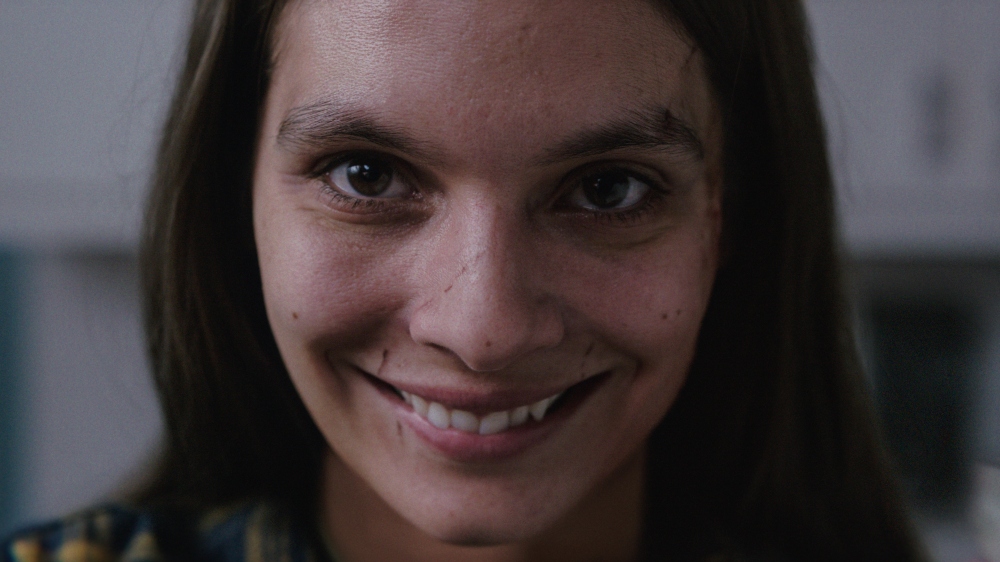
Paramount’s hit horror movie Smile has exceeded everyone’s expectations, especially considering it was originally intended for the studio’s streaming service. The film has grossed nearly $170 million worldwide on a reported production budget of just $17 million, extending Paramount’s year-long winning streak.
Expanded from writer-director Parker Finn‘s short film Laura Hasn’t Slept, the feature stars Sosie Bacon, whose laser-focused performance as psychiatrist Rose Cotter has resonated with viewers.
Also crucial to the success of Smile is the work of Cinematographer Charlie Sarroff, who has been shooting features, shorts, and music videos for nearly 15 years. The Australian DP has brought a distinctive look to films such as Pink Skies Ahead and the cult favorite Relic (both 2020), but none have touched a nerve quite like Smile has.
Below the Line spoke to Sarroff by phone in Los Angeles, where he talked about his background, his collaboration with Finn, and how they had to set one unlucky stuntman on fire… twice.
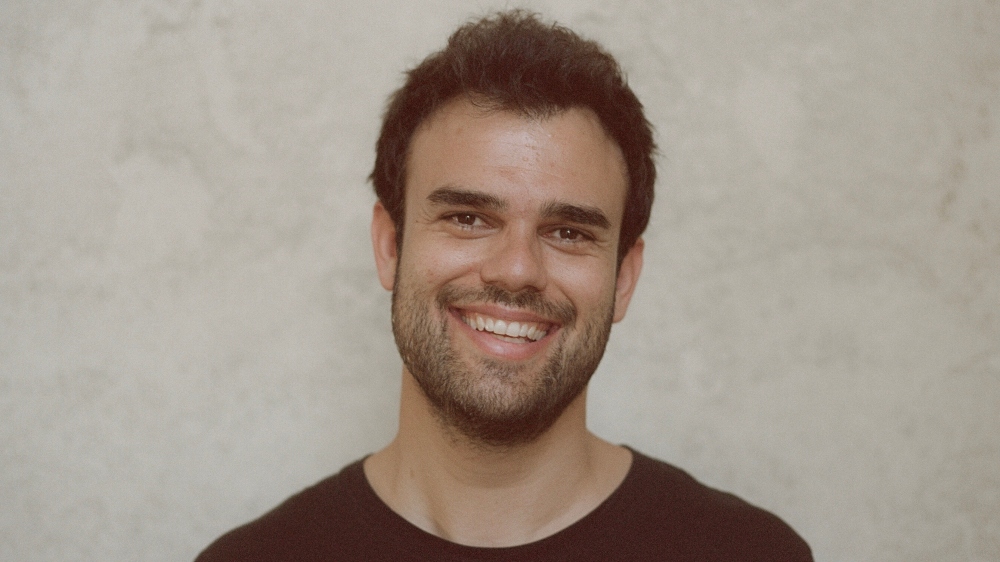
Below the Line: Tell us how you got onto the Smile project.
Charlie Sarroff: I met Parker Finn at a pre-South by Southwest event in Los Angeles, where I was screening Relic. We got along well and planned to hang out at the festival. Then the pandemic hit and the festival was moved online and everything shut down. We kept in touch, and I saw that Laura Hasn’t Slept, which was like a proof of concept for Smile, won some awards.
When we were allowed out of our houses, we met for a beer. He told me Smile had just been picked up by Temple Hill and Paramount and later, [he] sent me a script. It was a page-turner — gory, traumatic, dark, [and] sometimes humorous. It was a fresh take on horror themes, and I could see he had a vision for it. I thought, ‘this is a guy I want to get behind.’
This was meant to be a streaming film for Paramount — that’s what I thought I was taking on. It’s my first studio film. I’m just really happy with the exposure it’s getting.
BTL: Was streaming the reason you chose the 2:1 aspect ratio?
Sarroff: Parker and I are both fans of anamorphic and Scope. Relic was spherical with a 2.39 crop, and I’m really comfortable with that format. But we both decided that 2:1 was a good, happy medium that just worked for Smile. Parker was particularly fond of the aspect ratio and was the first to suggest testing it.
With the sets we were filming and the compositions we went for, we thought the film would benefit [from] a little bit more height in the frame. We didn’t necessarily think people would be watching on laptops. Although that did come into play, I’m not going to lie. We thought, ‘if this is a streamer, maybe we should have a little more real estate on the screen.’
But we honestly really love the aspect ratio. A lot of recent films have embraced it, like Ari Aster‘s Hereditary and Midsommar. We did some tests and got approval from the studio. To a degree, it suits television, but even if it was going straight to theaters, [there’s] a very good chance we would have still landed on that aspect ratio.
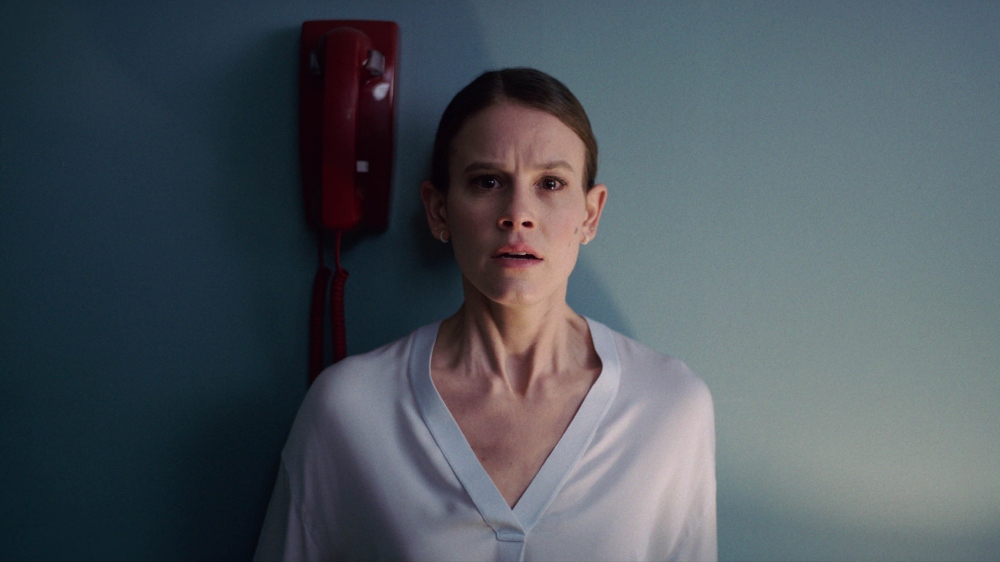
BTL: Did that decision affect your camera choices?
Sarroff: We actually shot on the Alexa 65. We used the Alexa LF Mini as a B-camera here and there and when on Steadicam. We wanted to be up close and personal in Rose’s world and really feel her anxiety. We also wanted to create this feeling of the audience being able to see quite a lot around her. We wanted viewers to feel that depth, feel that something could be jumping out at any moment.
The Alexa 65 was used on large-scale, epic films like The Revenant. The selling point for us was that we could shoot on extremely wide lenses with minimal distortion. With a smaller format camera, people’s faces become unrealistic, even ghoulish, when in close on wide lenses. But with the 65, we could use a 28mm lens with very little warping and end up with about the same field of view as a 14mm on a Super 35 format camera.
We used primarily Arri DNA lenses — vintage glass that has been repackaged. Parker and I don’t like the cleanest images. We didn’t want modern, crisp glass. We found the DNAs were kind on skin tones and had a lot of character, [but] they were a bit inconsistent, and it was hard to find a matching set. We’d change lenses and one would have a slightly green hue, another a slightly warm hue. Our awesome DIT, Nate Spivey, really helped balance that out.
BTL: Did you have a tight schedule?
Sarroff: I believe we had 32 days, with an added Saturday where we got some B-roll and did some drone footage. It would have been great to get 40 or 50 days, but the industry doesn’t work like that. As with most films, there are some scenes that have been left out due to running time and story structure, but I don’t believe we dropped a scene while shooting.
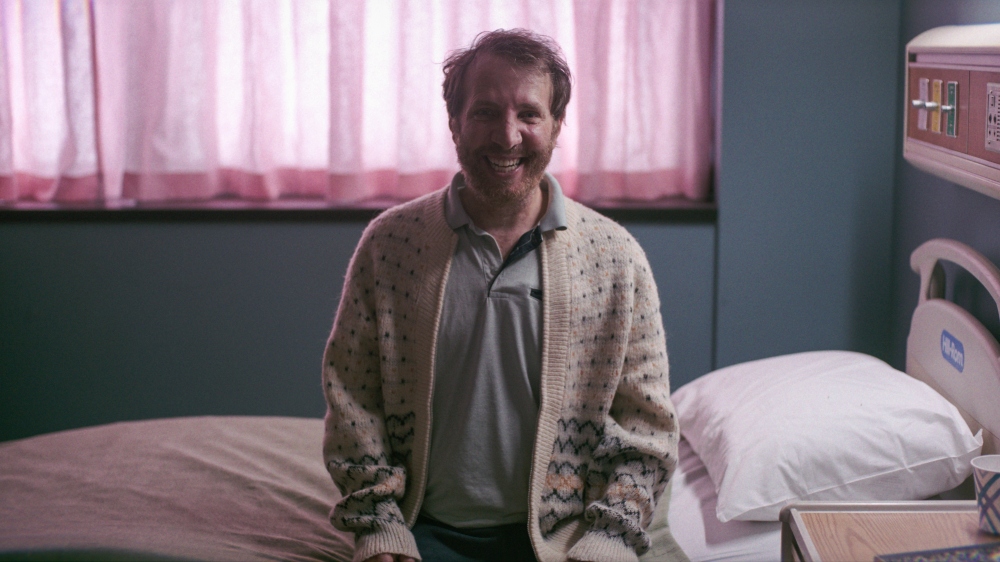
BTL: Going back to the beginning, how did you prep with Parker Finn? What references did you have? What did you look at?
Sarroff: We watched a combination of film, TV, and artwork. For honing in on the Alexa 65, we looked at the great photographer Gregory Crewdson. He does this surreal, cinematic imagery. He plays with images on top of each other to create extreme depth. He plays with color temperatures and balances. There’s a series shot in houses with female characters in living room settings that we really responded to.
Parker said one of his favorite directors was Todd Haynes, who’s not really thought of as [a] horror [director], although some of his work does lean that way. When I was putting together a mood board I included Safe, Todd’s film from 1995. We really liked the Servant series, especially the camera by Mike Gioulakis (It Follows). A film called Possession, with Isabelle Adjani and Sam Neill, was definitely a reference, especially in the way the camera moves.
BTL: Did Parker Finn have specific ideas for shots?
Sarroff: Yes. Parker is a very visual director and a complete film buff so he had lots of ideas about shots and sequences that I was happy to help him bring to life. The first time we met and had a beer, he told me an idea. It’s the shot above the ambulance near the opening that tilts up and enters Dr. Desai’s [Kal Penn] office. ‘How did I think it could be done?’ So prep started even before I was told I had the film! [laughing]
That ended up being a drone shot with a VFX stitch to a Technocrane shot through an exterior building facade we built on stage. The camera then pushes through the window into the office, and [we] just stitch it to the office shot.
The drone shot took quite a bit of choreography with the ambulance driver, the EMS guys, and Laura [Caitlin Stasey] screaming on the stretcher. That was a real hospital in New Jersey. When the camera tilts up to the office and we stitch to the crane shot, we push inside (the window glass was put back in post). When Rose knocks on the door, we pan around to the left. That was a really fun shot to map out.
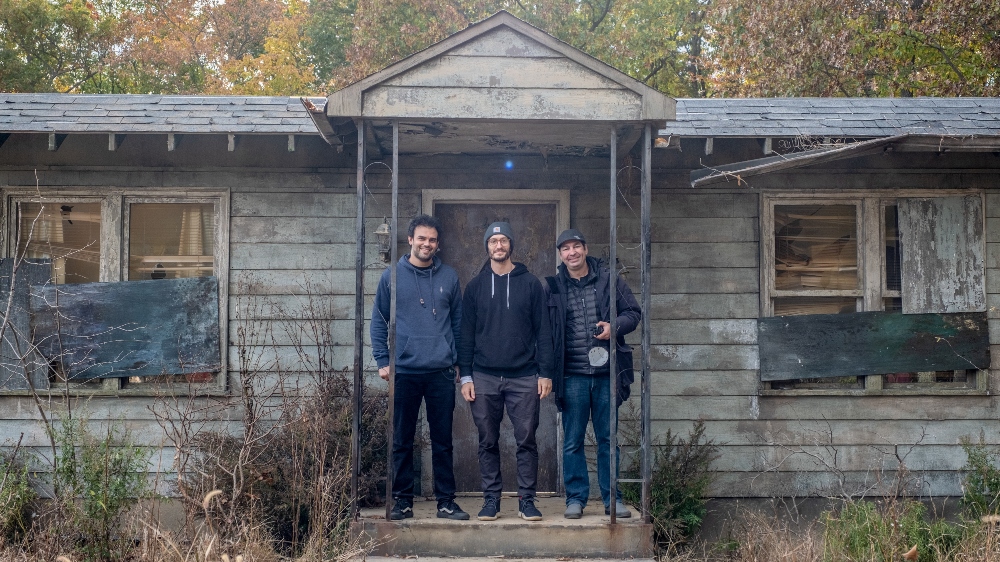
BTL: Great effects, and they even put reflections on the glass of a picture hanging on the wall. Now, whose idea was it to flip the horizon and shoot upside down? I think you do it three times during the movie.
Sarroff: Parker definitely wanted the first one, where Rose is driving and the camera is parallel with her car. We would shoot little toy cars on an iPhone to figure out the best way to do it. For the one of the skyline, we told the drone op to go freestyle, get weird, [and] make everything feel surreal. The world turned upside down to reflect Rose’s state of mind. It was a combination of decisions, a collaboration. We shot other ones, in an industrial park, for example, that didn’t make it into the movie.
BTL: It’s a pretty daring choice. I think what’s even more daring is how you centered faces in the frame and went in tight on them.
Sarroff: We wanted everything to feel claustrophobic. Some of the eye lines were very tight to frame. We used wide lenses basically throughout the whole film, whether it’s a wide shot or a close-up. Rather than using telephoto lenses, we wanted to have depth around the characters, especially Rose. We wanted her to feel vulnerable and lonely. Empty spaces with Rose centered up close. Sosie had a tough role, and she did a great job. Having to turn up day after day playing different levels of trauma must have taken its toll.
BTL: How did you build your frames? You have to both reveal and hide information in this film.
Sarroff: I’m a big believer that what you don’t see or can’t see is as important as what you do see. So to answer your question, the first element is obviously light. Building with light, what should you see? What should you not see? Where does the suspense come from? What colors and tones and temperatures will provoke the feelings you want?
It’s often just a question of moving a little bit to the left or right. It might be straightening curtains, [or] moving a lamp. Whatever helps build mood and texture. It’s funny, Smile definitely has dark parts, but it’s not the darkest horror film around. There are quite a lot of scenes where we didn’t want it to be dark, like in the hospital.
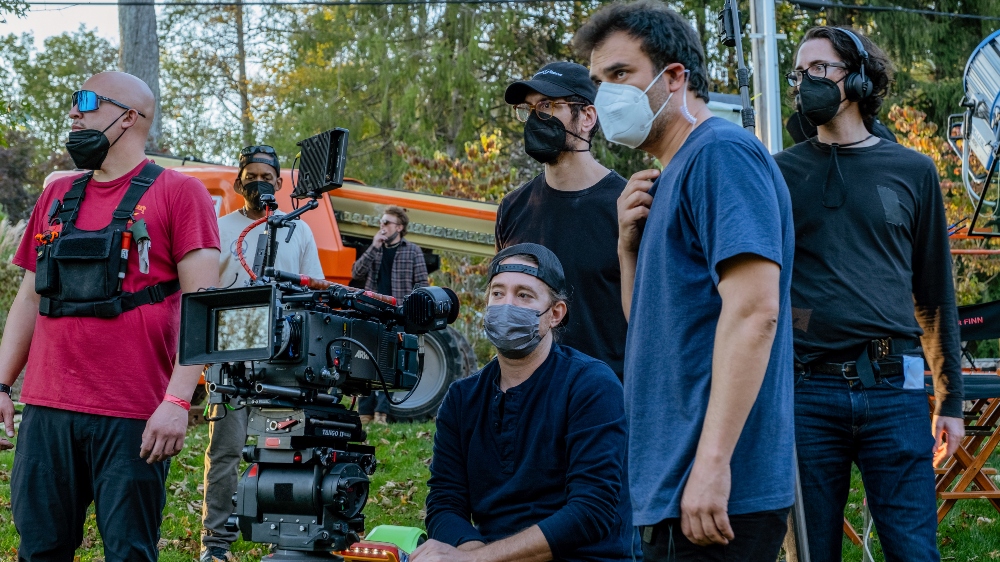
BTL: How much of the film was shot on soundstages?
Sarroff: Rose’s childhood house, the hospital offices, [and] all of the exam rooms and corridors were on stages. Some small scenes, like the morgue. Inside the fridge, inside the cupboard, those little shots we built on stage with some green screen behind [them].
The car sequence where Joel [Kyle Gallner] drives Rose to the prison was done with LED volume on stage. The jail itself was a real place, a working prison that had an empty floor, which they were kind enough to let us use.
BTL: Talk a little about safety procedures on set, especially for the fire scenes.
Sarroff: The fire scenes were a collaboration with SFX, the stunt coordinators, and other departments. During the shoot, the tragic incident in New Mexico occurred with Halyna Hutchins, [so] everyone was on high alert and not feeling the best about the state of our industry. We took safety very seriously [and] had a New Jersey fire brigade there to help us. We had pyrotechnic people on board, an ambulance standing by, and then a lot of camera trickery.
For instance, we never had Sosie in a burning house with a burning person. We would cut back and forth and a lot was simulated with light.
We shot it on the last day, and it was an exciting way to finish. We set the interior of the house on fire and then the stunt performer was set alight — all done safely, no one was hurt. With a combination of real fire, VFX fire, and different plates, we actually set him on fire twice — once in the house, and then [again] outside on stage against a black screen.
BTL: Not every set has those precautions in place.
Sarroff: At the end of the day, we’re making entertainment. Film means a lot to us all. We love it, we live it, [and] it can change people’s lives to a degree. But it’s not worth getting hurt or dying over just to save a little money.
If people are feeling good about being on set, [and] they’ve had a good night’s rest and feel safe, it’s going to make the content better. We’ll have a better product.
Smile is now playing nationwide in theaters, where it has grossed $168 million worldwide to date, surely putting a smile on Paramount’s face.





